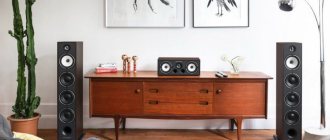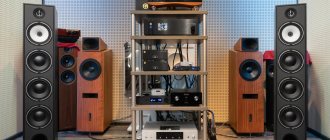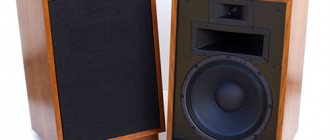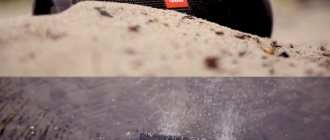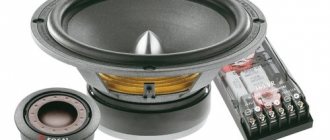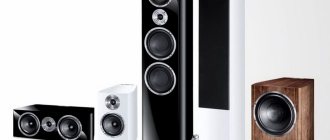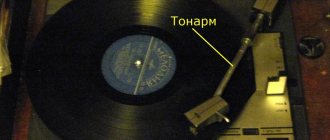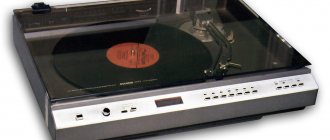Acoustic system Triangle Borea BR09
Triangle Borea BR09 is the top floor-standing speaker in its series. The company's engineers have implemented in this three-way speaker system all their experience gained in creating high-end Hi-Fi speakers. The speakers are great for use in stereo systems and home theaters thanks to their powerful bass and wide soundstage. The high sensitivity of the acoustics ensures its easy compatibility with a wide variety of amplifiers. Triangle Borea BR09 looks chic and will decorate any modern interior. THREE-WAY CONSTRUCTION
The Triangle Borea BR09 speakers have a three-way design, which is recognized by music lovers as the best in terms of sound quality. Three 16 cm bass drivers with fiberglass cones provide deep and fast bass from 35 Hz. Even the most energetic electronic music will sound like a real concert through the Triangle Borea BR09. The natural cellulose midrange driver excels at reproducing vocals and acoustic instruments. The musicians literally come to life in the listening room and you can hear the smallest nuances of the sound of a violin or piano. And for the highest frequencies, the Triangle Borea BR09 has a tweeter in a proprietary horn, its structure uses an effective flow separation system (EFS). The directional horn with EFS makes the stage noticeably wider and the sound more spacious. It is to him that the speakers owe their airy and detailed sound, which makes listening to music especially exciting.
AUDIOPHILE GRADE CUT-OFF FILTER
To ensure that the sound of the Triangle Borea BR09 speakers is balanced and transparent, they are equipped with a crossover filter using audiophile-grade components. The crossover filter plays a vital role in the overall sound quality of speakers, but not all speaker manufacturers pay due attention to it. Triangle engineers carefully designed the filter circuit for the BR09 and as a result the speakers sound surprisingly natural.
POWERFUL SOUND WITH ANY AMPLIFIER
The Triangle Borea BR09 speakers are capable of sounding not only balanced and musical, but also loud. Acoustics literally fills the room and even halls with an area of 30 square meters with its sound. meters are not a problem for her. Thanks to their high sensitivity of 92 dB, the speakers work perfectly with any amplifiers, including tube ones.
BASE INVERTER ON THE FRONT PANEL
The bass reflex in the speakers ensures the correct operation of the low-frequency speakers. In order for the Triangle Borea BR09 to be conveniently placed in the listening room, the bass reflex is installed on the front panel. Now you can place your speakers close to the wall without worrying about low-frequency distortion.
RELIABLE CASE
The Triangle Borea BR09 speaker cabinets are made from selected thick MDF panels for maximum structural reliability. The BR09 uses internal speaker damping. This unique Triangle development is called DVAS (Driver Vibration Absorption System). DVAS increases the neutrality and purity of the sound of acoustics.
EUROPEAN DESIGN
Triangle Borea BR09 has a chic design, typical for models in the high price category. These speakers will fit perfectly into a modern living room, and choosing from several exterior finishing options will allow you to achieve optimal compatibility with the interior.
Daring fellows
Price – 50,000 rub.
Over its 37-year history, the French company Triangle has known both triumphs and extremely difficult periods that put it on the brink of survival. One of these episodes was the release of electronic components that had good sound, but rather low reliability. Fortunately, having walked the razor's edge at that time, the company focused on what it does best, namely, producing speaker systems with a recognizable design and sound signature.
The company's headquarters are located on the outskirts of Soissons in Picardy, the heart of the ancient kingdom of the Franks. You can see what the headquarters and production facilities look like in our report on a visit to the factory that took place several years ago.
The design of the midrange driver also follows the ideas of Triangle founder Renaud de Vernet about the choice of material for cones. In his opinion, the sound of this important range can only be entrusted to a paper membrane, and Triangle Altea Borea was no exception to the general rule. It uses a white cellulose diffuser with a diameter of 165 mm, mounted on a foam rubber suspension, and a phase-equalizing core is also present.
This time we tested floor-standing speakers from the Altea series, which have been successfully sold on the Russian market for several years. In the Triangle hierarchy, these acoustic systems belong to the entry level, however, their proprietary approach to design is clearly manifested in them. Let's start the description with the speakers used in the Triangle Altea Borea. Traditionally, the high-frequency range is sounded by a tweeter with a metal dome, in this case aluminum. Following the same tradition, it is loaded onto a small horn with a phase-equalizing insert, which has long been a generic feature of Triangle speakers. The presence of a small core at the mouth of the horn should not be underestimated - it helps not only to ensure the correct directional pattern at HF, but also makes it easier to match all the speakers of the system in terms of sound pressure level. Neodymium is used in the magnetic system, and the tweeter design also includes a special rear chamber to absorb the back radiation of the dome.
Moving on to the mid-frequency speaker, we note that it also follows the ideas of Triangle founder Renaud de Vernet about the choice of material for diffusers. In his opinion, the sound of this important range can only be entrusted to a paper membrane, and Triangle Altea Borea was no exception to the general rule. It uses a white cellulose diffuser with a diameter of 165 mm, mounted on a foam rubber suspension, and a phase-equalizing core is also present. The woofer also has a cone with a small diameter - 165 mm, only it is clearly heavier and made of black cellulose, the central hole in which is covered with a regular dust cap. The choice of such a woofer is not surprising since we are dealing with a 2.5-way configuration, where both speakers help each other on the bass in order to provide a higher sound pressure level.
The speakers are fixed flush, and the places where the baskets are attached to the front panel are covered with neat decorative overlays. Naturally, the entire front panel can be carefully covered with a protective grille with an acoustically transparent fabric stretched over it. The speaker housings are made of high quality fiberboard, covered with vinyl film, imitating natural veneer. In the lower part there is a support plate into which spikes are screwed, designed for better mechanical decoupling of the speakers from the floor. The bass reflex port is located on the front panel. On the back wall there is only one pair of connectors for connecting speaker wire, but it accepts all types of cables, both stripped and not. There is no indication of the place of assembly, there is only an inscription that the model was developed in France. Well, where else?
According to some indicators, the work of the inexpensive Triangle Altea Borea seemed to us even better balanced than that of their more expensive counterparts. Well, it was difficult to expect such fast and clean bass from such miniature floorstanding speakers. In general, both macro- and microdynamic abilities have always been Triangle’s strong point, even in the most budget series.
For listening, the Triangle Altea Borea was plugged into our test system, which consisted of Bryston electronics - a BCD-1 CD player and a B100 integrated amplifier. Since I am very familiar with the signature style of Triangle speaker systems, my initial impressions did not come as a surprise - there is definitely a slight emphasis on the upper mids and highs, but it is quite easy to level it out, you just need to turn the speakers parallel to the front line and not point them directly at the listener. The selection of amplifier also plays a big role. In our laboratory, a device from Audio Analogue was simultaneously tested, and so it helped tame the agility of the speakers in the high-frequency range. However, the final audition still took place with the participation of standard laboratory electronics.
After completing all the necessary steps to place the system in the room, Triangle Altea Borea pleased us with a very mature sound with excellent bass, lively mids and emotional highs. It must be said that the sound of Triangle has long divided audiophiles into two camps, there are those who sincerely love it, and there are others who just as sincerely do not accept it. It seems that the sound of this budget series will be able to reconcile them to some extent. Moreover, according to some indicators, the work of the inexpensive Triangle Altea Borea seemed to us even better balanced than that of their more expensive counterparts. Well, it was difficult to expect such fast and clean bass from such miniature floorstanding speakers. In general, both macro- and microdynamic abilities have always been Triangle’s strong point, even in the most budget series. We highly recommend paying attention to these, albeit small, but very capable floor-standing speakers.
Measurement results
The impedance of the Triangle Altea Borea speaker systems is quite stable in the audible frequency band (Fig. 1). The average value of the resistance module is 6.6 Ohms, the minimum does not fall below 4 Ohms. This result, coupled with a small deviation of the electrical phase, will not cause difficulties in selecting an amplifier. Excellent frequency response (Fig. 2). Amplitude deviations will not leave the 2.2 dB corridor at medium frequencies. At high levels, the unevenness indicator has a value of +\- 1.4 dB. Acoustics introduces a small amount of harmonics into the original signal. It is especially worth noting the slight increase in the nonlinear distortion coefficient in the complex low-frequency region with increasing sound pressure level (Fig. 3). The average SOI value for the frequency range 100 – 10,000 Hz at 88 dB is 0.31%. The sensitivity of the system was 91 dB.
